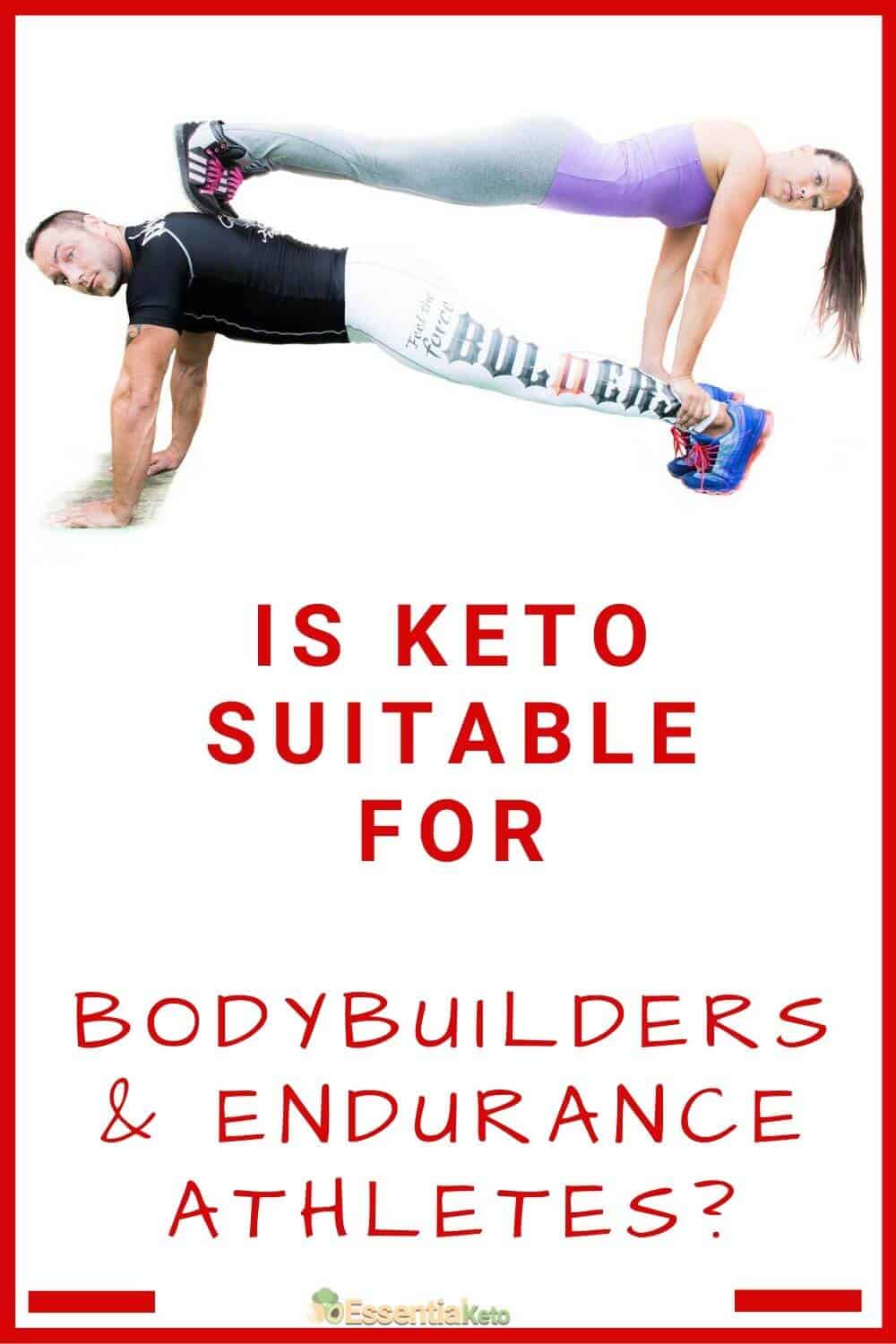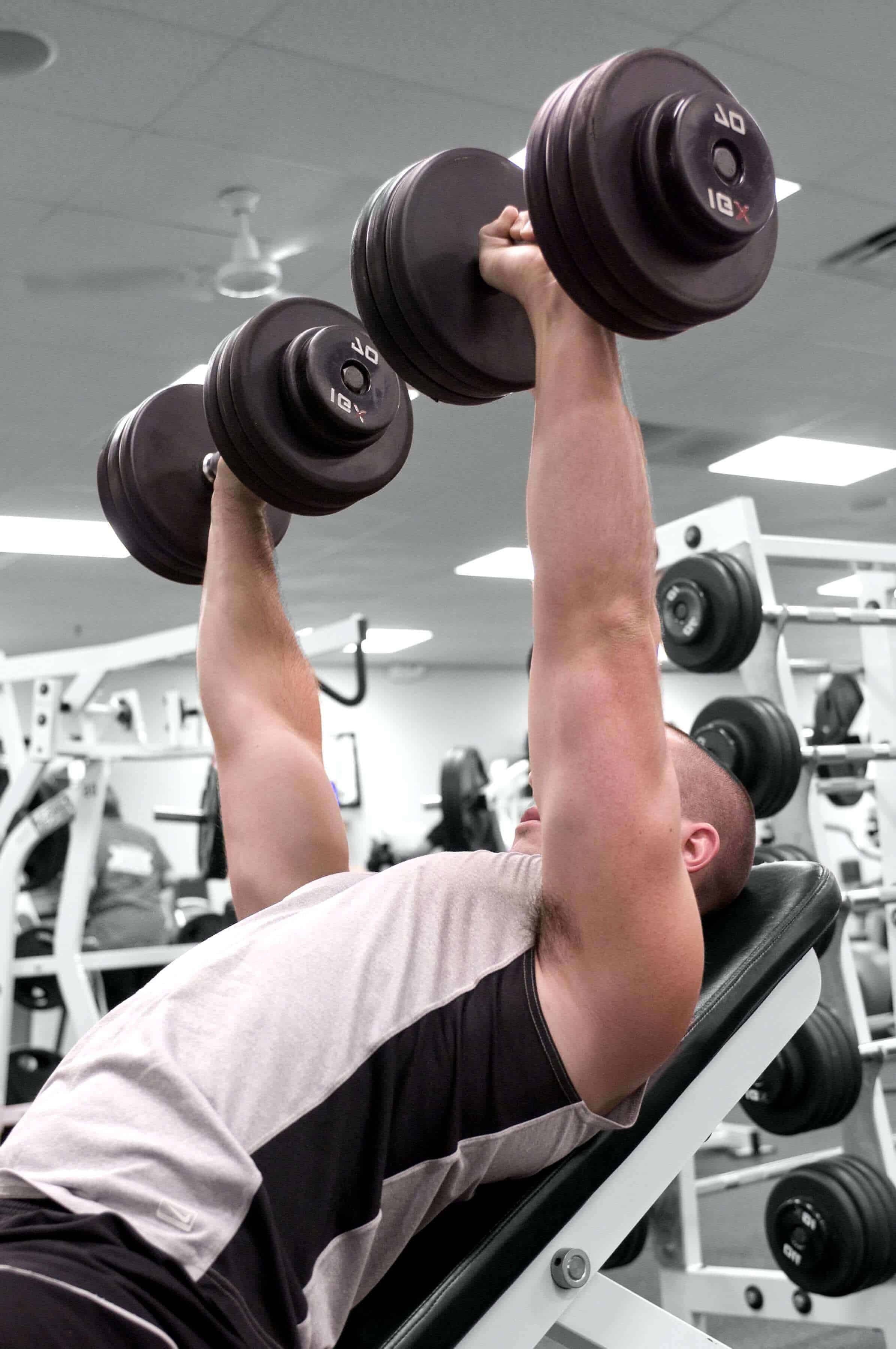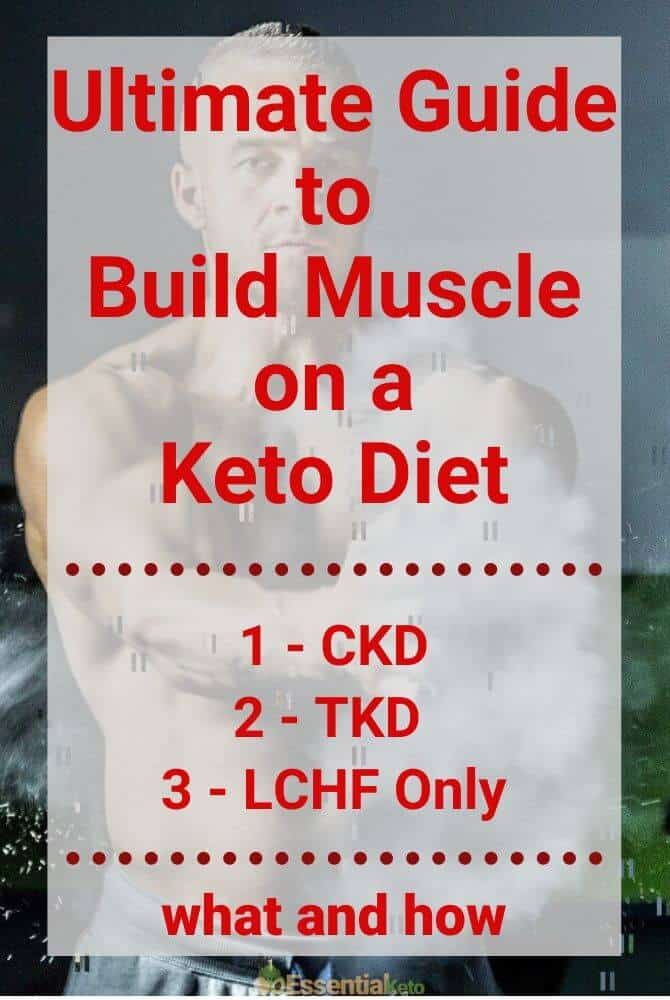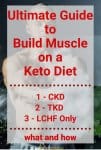Ketogenic Diet for Bodybuilding

Great bodybuilders and endurance athletes do two things very well:
First, they know exactly how to train.
Second, they feed their bodies the best possible food to achieve their training goals.
But you're probably wondering:
Am I really getting the most out of my food, or could I perform better on a ketogenic diet?
Or maybe you are asking what is a ketogenic diet?
Want to know what it is, then carry on reading...
If you want to know about CKD, go here or TKD go here or keto only, go here.
What is it?
A ketogenic diet is one high in healthy fats, moderate in protein, and very low in carbohydrates.
The keto diet forces the body to burn fat for energy, instead of carbohydrates, which is its default energy source.
In a normal diet that contains high amounts of carbohydrates, the body converts carbs into glucose, which is used by the body, as well as the brain, for fuel and any leftover glucose that is not used is then stored as fat.
In a ketogenic diet, or a very low-carb diet, the body has very little carbohydrates to turn into glucose, so it does the next best thing: it turns to the liver.
The liver, then, takes the body’s fat supply and turns it into fatty acids, which are converted into ketones and so begins the metabolic process known as ketosis, which uses the body’s fat stores for energy.
Now, I hear you say this is great for weight loss...
... but can a bodybuilder or a high endurance athlete follow this way of eating and have the energy needed for peak performance?
The concern is:
When you lower the amount of carbohydrates in your diet, you’re also lowering your glycogen levels, which is the default energy source for muscles during workouts, and when glycogen is lacking, so is performance.
Then you may be wondering:
Is there a ketogenic diet for bodybuilding and endurance athletes?
The good news is:
Strength trainers, bodybuilders, sprinters, or anyone doing intensive training do have options if they want to follow a low carb lifestyle.
So yes, you can indeed enjoy the numerous benefits it offers without sacrificing the performance needed for training.
And yes - improving your wellness and building muscle on Keto is attainable.
Have more questions about ketogenic diets?
Then check out our keto FAQ or if you want to know what foods you can eat, you'll find our shopping list here.
So, what is the bottom line?
There really are two options for bodybuilders or endurance athletes to approach a ketogenic diet. The first is a cyclical ketogenic diet, the second a targeted ketogenic diet.
However, more and more endurance athletes are training only with fat as fuel.
Here are the 3 options...
The Cyclical Ketogenic Diet
How CKD works
With a cyclical ketogenic diet (CKD) you follow a basic ketogenic diet.
Then you re-feed your body through a cycle that lasts either 1 week or 2 weeks.
In the refeeding cycle you add a certain amount of complex carbohydrates, limited amounts of fat and protein to your diet.

Cyclical ketogenic diet for bodybuilding - Option 1
Follow a normal ketogenic diet for 5 days and then 2 days of carb loading with high to medium GI (glycemic index) foods.
On the 2 days when you do a carb-load, you increase your carb intake by 50 to 60%.
This high amount is typically above a person’s usual dietary intake, but the reason behind this increase is to immediately refill the glycogen levels in the liver and revamp muscle energy, but leave nothing behind to be stored as fat.
This way you increase your carb intake significantly during the cyclical “re feed,” also known as carb-load.
Ketogenic diet bodybuilding - Option 2
With this second option you follow a bi-weekly cycle where a ketogenic diet is followed for 10 to 12 days, followed by 3 to 4 days of carb loading.
Which is best for you?
Both of these options can yield good results but it mainly depends on your own training schedule, goals, preference and results.
The Goals of CKD
- The first goal is to provide you with a break of sorts from going with barely little or no carbohydrates at all as in a standard ketogenic diet, to eating a high carb load in line with your workout needs.
- The second goal is to modulate your hormone levels and thyroid gland, which becomes suppressed during dieting.
- The third goal is to replenish your body’s dwindling supply of glycogen right when your body needs it the most so it’s used as energy, rather than being stored as fat.
Who Benefits from Cyclical Ketogenic Diet?
Anybody who engages in bodybuilding, strength training, athletics and endurance athletes.
Athletes and bodybuilders use the refueled glycogen levels for high-intensity training, as a way of increasing endurance and maintaining muscle mass.
Implementing a Cyclical Ketogenic Diet Plan
For many this sort of training is extremely hard on a very low carb diet.
If that is you, then the time between carb-loads is very important, as well as the kinds of foods you eat during the carb-load is critical for the success of this diet and the continued health of your body.
How much and when you eat, mainly depends on how intense your training is, as well as your overall fitness goals.
Some Pointers
- For starters, you will need to start a carb-load once a week. Adjusting the intervals between carb-loads is the trick and it will take some time to get it just right, as individual results will vary.
- The key is to implement carb loads, but not allow the body to slip out of ketosis.
- Measure how much your carb intake is during a load then gauge ketone levels in the urine in the following couple of days. Remember to give your body time to adjust to this new diet and metabolic state.
- Limit your fat intake while you’re loading up on carbs but keep the amount of protein intake the same, or maybe even increase it slightly in line with the intensity of your training.
- A lean body mass of 150 pounds. To compute your lean body mass you can use this calculator.
- A 2 000 calorie per day diet.
Therefore your food intake should be:
- Protein at 1 gm/lb. of lean body mass = 150 gm of protein daily.
- Carb at 0.1 - 0.2 gm/lb. of lean body mass = 15 – 30 gm daily.
- Fat to make up the balance.
Proteins and carbs have 4 calories/gram which means the total amount of calories so far is (150 + 30 {or less}) x 4 = 720 calories.
Given that this calculation is done for an athlete, we assume the higher carb ratio.
For a non-athlete, work with the 0.1% to achieve an effective 5% carb intake.
Fat intake will be measured according to how many calories are leftover to reach the 2 000 calories/day goal (2000 – 720 = 1280).
As 1 gm of fat has 9 calories, 1280/9 = 142 gm/day is the amount of total fat intake for one day.

Therefore, your daily nutrient intake would be as follows:
- 150 grams of protein
- 30 grams of carbohydrate
- 142 grams of fat
Starting your Carb load
- Begin roughly 5 hours before your final workout of the week, and eat about 25 to 50 grams of carbohydrates in addition to some protein and fats. This will help commence the production of liver enzymes.
- Then 1 to 2 hours before the workout, eat anywhere from 25 – 50 grams of both glucose (brown rice, yogurt, oats and milk) and fructose (fruit) to replenish the liver glycogen levels.
- The next 48 hours will mainly be based on your own personal preferences and body needs, but a basic guideline of the carb-load is as follows:
- 1st day: 70% of your total caloric intake should be nothing but carbs (4.5 grams/lb. of lean mass), mainly those with a high GI such as white bread and rice, bagels, potatoes. Protein and fats should be evenly split, with each taking only 15% of your total caloric intake.
- 2nd day: 60% carbohydrates (2.25 grams/lb. of lean mass), preferably those with a bit lower GI (raisins, bananas, pita bread, basmati rice all have a medium GI of 56 - 69; beans in all its forms, seeds, walnuts, cashews, certain fruits have a low GI of 55 or less). Increase the amount of proteins to 25% with fat remaining at 15%.
Returning to Ketosis
Remember that the longer you’ve been following a low carb high fat diet, the easier it will be for your body to re-enter ketosis and readjust.
Make sure you pick your carbs wisely because those with a lower GI will make it easier for you in the long run.
Additionally, the more you train, the easier it is to enter ketosis because depleting glycogen supply will be quicker.
Consistency is key!
The fool proof method of emptying your liver’s glycogen supply in order to re-enter ketosis is by following these simple steps during your first three days after a carb-load:
- Day 1: Refrain from eating after 6 pm
- Day 2: Wake up and do a high intensity interval training workout or an intense weight-training workout before you have breakfast. Start your ketogenic diet with only 0 to 2% carb intake.
- Day 3: Wake up and do a medium intensity workout or a medium intensity weight training workout before breakfast. Begin a normal ketogenic diet of about 3 to 5% carb intake.
- Days 4 & 5: Same as day 3.
Conclusion
The Cyclic Ketogenic Diet is designed for professional athletes, sprinters, bodybuilders and really anyone who is engaging in high intensity workouts or power lifting. It is a strict regimen with carefully measured carb intake.
It features periods of higher carb eating called refeeds, typically one time per week in order to supply the body with the muscle glycogen needed to perform well during high intensity workouts.
The cyclic ketogenic diet supports intense workouts, bodybuilders and athletes by providing them with the carbs they need to perform, and is a strict regimen with carefully measured carb intake, well planned out depletion workouts along with strict adherence to very low carb eating for the rest of the week.
If you are looking for a ketogenic diet for bodybuilding and this sounds like something that would benefit you, consult a fitness or nutrition expert to make sure you’re on the right track in order to successfully reap in the rewards of your hard work.

The targeted ketogenic diet is another option to maintain high levels of training performance while also following a keto lifestyle.
The Targeted Ketogenic Diet
What is TKD?
A targeted ketogenic diet (TKD) means following the typical very low carb keto diet on the days you don’t work out, then increasing intake of carbohydrates by 25 to 50 grams prior to your exercise routine on the days you exercise.
What this does is boost your blood sugar (glucose) levels during the time you’re physically active to supply vital glycogen to muscles that supply the optimal amount of energy to get through the workout.
It also allows your body to go right back into ketosis once the workout is completed.
Benefits of a Targeted Ketogenic Diet
You get the benefits of being on a ketogenic diet while, at the same time, providing your body with the energy it needs to train at a higher intensity level.
Yes, TKD is indeed known to provide several health benefits such as increased endurance and improved lean muscle mass. These benefits should allow you to see results from your workout fast.
The trick is that it allows you to consume a certain amount of carbohydrates 30-60 minutes before your workout session and right after your weight training session.
This way, you’re raising your blood glucose levels on a temporary basis in order to perform at an optimal level during your workouts but the intake of carbs occurs at a time they are least likely to turn into body fat.
In other words, you’re providing your body with a stock of energy so you can perform your workouts at optimum, high-intensity levels.

Who is TKD for?
This may be ideal for those who lift weights to build lean muscle mass, or engage in high intensity interval training where carbs are needed to fuel a workout.
However, if you’re planning to start a diet solely for weight loss or disease management, the TKD might not be the best option for you. The same is also true if your workout only includes yoga or walking.
Implementing a Targeted Ketogenic Diet Plan
Experts recommend experimenting to identify what works best for you, but typically, in TKD you will eat 25 to 50 grams of carbohydrates about twenty to thirty minutes before a workout to enhance performance.
The types of carbohydrates you choose are not very important and you are encouraged to experiment with different foods to evaluate your results.
Many prefer easy to digest carbs in the form of liquids such as sports drinks or high Glycemic Index foods as they absorb quickly in the body and prevent stomach upset while training.
Candy, bagels, oatmeal, milk, cereal, and natural maple syrup are widely used.
If you choose a low GI carb then eat it 1 to 1 1/2 hours before the workout. If you choose high GI carbs, eat 30 to 45 minutes before the workout.
However, you need to adjust this amount according to your own personal goals. For instance, if you’re trying to build muscle, you should increase your carbohydrate intake. If on the other hand you’re trying to shed pounds, then you should lower it.
The key is to experiment to identify what works best for you!
Glycemic Index
If you plan to follow a targeted ketogenic plan, it is important to understand which foods have a high, low, and moderate Glycemic Index (GI).
The Glycemic Index is a number from 1 to 100 that is a direct reflection of how a certain type of food affects one’s blood sugar (glucose) level.
It’s good to bear in mind that eating foods with a high GI will digest fast and will give you instant energy. Here is an informative infographic if you want to understand the glycemic index and glycemic load of food.
Also keep in mind that glucose-based carbs like brown rice, oats, yogurt and milk will raise glycogen levels in the muscle, while fructose-based carbs (fruit) raise glycogen levels in the liver.
After Your Workout
What you eat after your workout is also important.
After your workout your meal of smoothie should be low in fat. It is true that fat is good for you in keto, but after exercising foods high in fat may impair the absorption of nutrients and the time needed for your muscles to recover.
Post-exercise foods should be low in fat but high in protein.
On the days when you’re not working out, it’s a matter of personal choice whether to keep the carb intake at a slightly lower level or simply remove it altogether.
Returning to Ketosis
Research for the most part has shown that consuming carbs before exercise should not negatively affect ketosis, but again results may differ from person to person.
You should experiment and find what works best for you. Check your ketone levels with one of the many ketone test kits available.
There will be a short period of time following a workout where blood insulin levels will be elevated and free fatty acid availability needed for ketone production is decreased, but as blood glucose is pushed into the muscles, insulin levels will drop allowing ketogenesis to resume within several hours.
Conclusion
TKD is especially suitable for those who take part in high intensity exercises. If you’re a sprinter, for example, or lift weights or even participate in high intensity interval training, then this diet may be ideal for you.
If you feel that you do not have enough resources on a classic ketogenic diet, then try this approach.
It will provide your body with ample levels of glycogen to support you during your workouts while allowing you to maintain a low carb lifestyle otherwise for optimal fat burning.
This type of diet may also be a good fit for those who want to maintain stable blood sugar levels and gain muscle at the same time.
If you don’t want the complexity of a cyclical ketogenic diet and don't want to completely eliminate carbs, but still want to benefit from the combined power of ketosis and intense exercise, then this approach may very well be for you.
Ketogenic Diet ONLY
Can endurance athletes compete on LCHF?
It would seem that more and more endurance athletes are challenging whether to carb load or not.
Nutritionists, doctors and athletes are investigating whether it is possible and in fact advantageous to train and compete with fat and ketones as boy fuel rather than carbs and glucose.
As more evidence becomes available, I will continue to update this post, but for now check out the trailer of Cereal Killers 2 - Run on FAT.
In this film producer Donal O'Neill charts world class triathlete Sami Inkinen’s transition from pre-diabetic sugar burner to a faster, healthier, fat fueled endurance athlete under the guidance of New York Times bestselling author Dr Stephen Phinney.
Sami and his wife Meredith embark on an epic anti sugar crusade. They row unsupported for more than 2400 miles from California to Hawaii. All this on a ketogenic diet, with no extra sugar of glucose.
Their remarkable journey shows what is possible in endurance races with a fat fueling strategy.
“Run on Fat” challenges the very foundations of sports nutrition. Watch the trailer below and let us know your views in the comments below...
In Summary
The ketogenic diet for bodybuilding comes in different variations. When choosing which to follow, it’s best if you look at all of your options carefully and weigh the pros and cons of each.
You should also consider your goals, lifestyle, and the changes you’re willing to make during the process. As mentioned, sticking to a keto diet will require commitment before you can see results.
Aside from considering different variables, talking to a fitness expert or nutritionist can also help you come up with a sound decision.
These pros can properly assess your health status and suggest a keto diet that perfectly suits your needs and goals.

